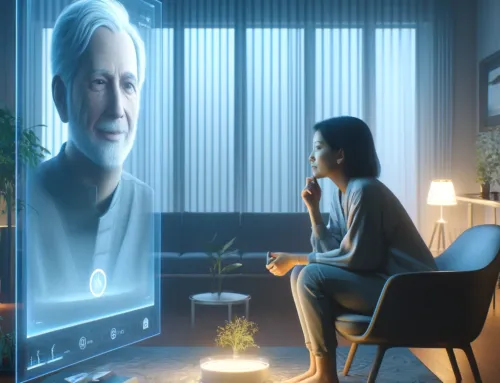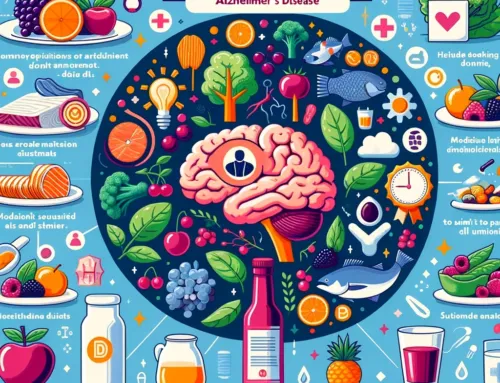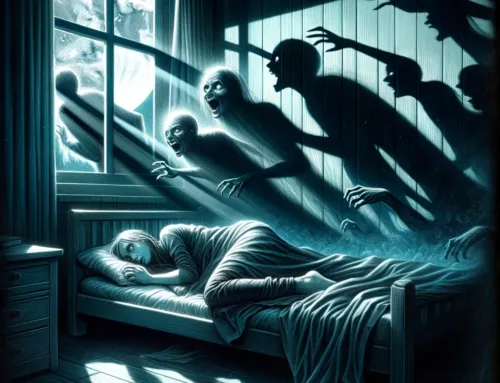
FAQ: Stroke Risk in Black Americans: Expert Q&A
FAQ
Approx read time: 21.6 min.
Mayo Clinic Explains Strokes
Stroke Risk in Black Americans: Expert Q&A
Top Causes of Stroke
Stroke Risk in Black Americans: Expert Q&A
Types
A stroke can happen in two main ways: Something blocks the flow of blood, or something causes bleeding in the brain.
Ischemic stroke. In 8 out of 10 strokes, a blood vessel that takes blood to your brain gets plugged. It happens when fatty deposits in arteries break off and travel to the brain or when poor blood flow from an irregular heartbeat forms a blood clot.
Hemorrhagic stroke. It’s less common than an ischemic stroke but can be more serious. A blood vessel in your brain balloons up and bursts, or a weakened one leaks. Uncontrolled high blood pressure and taking too much blood thinner medicine can lead to this kind of stroke.
Some people have what’s called a transient ischemic attack (TIA). This “mini stroke” is due to a temporary blockage. It doesn’t cause permanent brain damage, but it raises your odds of having a full-scale stroke.
Stroke Risk in Black Americans: Expert Q&A
Causes
You can treat some conditions that make you more likely to have a stroke. Other things that put you at risk can’t be changed:
High blood pressure. Your doctor may call it hypertension. It’s the biggest cause of strokes. If your blood pressure is typically 130/80 or higher, your doctor will discuss treatments with you.
Tobacco. Smoking or chewing it raises your odds of a stroke. Nicotine makes your blood pressure go up. Cigarette smoke causes a fatty buildup in your main neck artery. It also thickens your blood and makes it more likely to clot. Even secondhand smoke can affect you.
Heart disease. This condition includes defective heart valves as well as atrial fibrillation, or irregular heartbeat, which causes a quarter of all strokes among the very elderly. You can also have clogged arteries from fatty deposits.
Diabetes. People who have it often have high blood pressure and are more likely to be overweight. Both raise the chance of a stroke. Diabetes damages your blood vessels, which makes a stroke more likely. If you have a stroke when your blood sugar levels are high, the injury to your brain is greater.
Stroke Risk in Black Americans: Expert Q&A
Heart Disease and Stroke
How Does a Stroke Occur?
There are two types of stroke.
- Ischemic stroke is similar to a heart attack, except it occurs in the blood vessels of the brain. Clots can form in the brain’s blood vessels, in blood vessels leading to the brain, or even in blood vessels elsewhere in the body and then travel to the brain. These clots block blood flow to the brain’s cells. Ischemic stroke can also occur when too much plaque (fatty deposits and cholesterol) clogs the brain’s blood vessels. About 80% of all strokes are ischemic.
- Hemorrhagic (heh-more-raj-ik) strokes occur when a blood vessel in the brain breaks or ruptures. The result is blood seeping into the brain tissue, causing damage to brain cells. The most common causes of hemorrhagic stroke are high blood pressure and brain aneurysms. An aneurysm is a weakness or thinness in the blood vessel wall.
What Are the Symptoms of Stroke?
The most common symptoms of a stroke are:
- Weakness or numbness of the face, arm, or leg on one side of the body
- Loss of vision or dimming (like a curtain falling) in one or both eyes
- Loss of speech, difficulty talking, or understanding what others are saying
- Sudden, severe headache with no known cause
- Loss of balance or unstable walking, usually combined with another symptom
What Should I Do If I Experience Stroke Symptoms?
Immediately call 911 if you or someone you know has symptoms of a stroke. Stroke is a medical emergency. Immediate treatment can save your life or increase your chances of a full recovery.
Is it Possible to Prevent a Stroke?
Up to 50% of all strokes are preventable. Many risk factors can be controlled before they cause problems.
Controllable Risk Factors for Stroke:
- High blood pressure
- Atrial fibrillation
- Uncontrolled diabetes
- High cholesterol
- Smoking
- Excessive alcohol intake
- Obesity
- Carotid or coronary artery disease
Uncontrollable Risk Factors for Stroke:
- Age (>65)
- Gender (Men have more strokes, but women have deadlier strokes)
- Race (African-Americans are at increased risk)
- Family history of stroke
These are called transient ischemic attacks (also called TIA or “mini-stroke”) and are short, brief episodes of the stroke symptoms listed above. Some people have no symptoms warning them prior to a stroke or symptoms are so mild they are not noticeable. Regular check-ups are important in catching problems before they become serious. Report any symptoms or risk factors to your doctor.
The Warning Signs of Stroke
Warning Signs
Sometimes a stroke happens gradually, but you’re likely to have one or more sudden symptoms like these:
- Numbness or weakness in your face, arm, or leg, especially on one side
- Confusion or trouble understanding other people
- Difficulty speaking
- Trouble seeing with one or both eyes
- Problems walking or staying balanced or coordinated
- Dizziness
- Severe headache that comes on for no reason
If you have these symptoms, call 911 even if you’re not sure you’re having a stroke.
Be Prepared
Each year, about 795,000 people in the U.S. have a stroke. They can happen to anyone at any time. Planning for an emergency can make a big difference.
- Learn the warning signs of a stroke and let your family and friends know, too.
- If you have any medical conditions, wear a medical bracelet or other identification that lists them, your allergies, and any medication you take.
- Teach your children the FAST test, plus how to call 911, give your address, and describe what’s happening.
Types of Stroke
- What Are the Types of Strokes?
- Ischemic Stroke
- Transient Ischemic Attack or Mini-Stroke
- Hemorrhagic Stroke
What Are the Types of Strokes?
Strokes are medical emergencies that stop or interrupt the flow of blood to the brain. The five types are:
- Ischemic stroke
- Hemorrhagic stroke
- Transient ischemic attack (mini-stroke)
- Brain stem stroke
- Cryptogenic stroke (stroke of unknown cause)
What are the warning signs for a stroke?
Think of the word F-A-S-T to help you spot stroke signs and know when to call 911 for yourself or someone else:
- Face drooping: One side of the face droops or is numb. Your smile is uneven or lopsided.
- Arm weakness: One arm is weak or numb. One arm drifts downward when you try to raise both arms.
- Speech difficulty: Speech is slurred. You’re unable to speak or hard to understand.
- Time to call 911: If you have any of these signs, even if they go away, call 911 and get to a hospital immediately.
Ischemic Stroke
An ischemic stroke happens when a blood vessel supplying blood to your brain gets blocked by a blood clot. Most strokes are this type.
Symptoms of ischemic stroke
The symptoms depend on which parts of your brain are affected. They can include things like:
- Sudden numbness or weakness of your face, arm, or leg, often on one side of the body
- Confusion
- Problems speaking or understanding others
- Dizziness, loss of balance or coordination, or trouble walking
- Vision loss or double vision
Causes of ischemic stroke
A fatty substance called plaque collects in your arteries and narrows them. This process is called atherosclerosis, and it slows the flow of blood. Plaque breaks off and lots of cells come to the rescue causing a clot and blocking blood flow through the artery.
Besides atherosclerosis, other things that can raise your chances of getting an ischemic stroke are:
- Atrial fibrillation
- Heart attack
- Problem with your heart’s valves
- Injury to blood vessels in your neck
- Blood clotting problem
Types of ischemic stroke
There are two main types of ischemic stroke:
- Thrombotic strokes. They’re caused by a blood clot that forms in an artery that supplies blood to your brain, also called an atherosclerotic stroke.
- Embolic strokes. They happen when a clot forms somewhere else in your body and travels through the blood vessels to your brain. It gets stuck there and stops the flow of your blood. Atrial fibrillation increases the risk of clots forming in the heart that can then travels to the brain.
Risk factors of ischemic stroke
You’re more likely to have an ischemic stroke if you:
- Are over age 60
- Have high blood pressure, heart disease, high cholesterol, or diabetes
- Have an irregular heartbeat
- Smoke
- Have a family history of strokes
Complications of ischemic stroke
Sometimes you can get complications. A stroke damages your brain cells. The more damage that’s done, the more problems you can have. That’s why it’s important to get medical help as soon as possible because there’s a limited time for treating an acute stroke. If you don’t get treatment, you could have trouble like:
- Permanent weakness or numbness or garbled speech
- Seizures
- Problems with memory and understanding
Transient Ischemic Attack or Mini-Stroke
Ischemic strokes also include something called a “mini-stroke” or a TIA (transient ischemic attack). This is a temporary blockage in blood flow to your brain. The symptoms usually last for just a few minutes or may go away in 24 hours.
Symptoms of TIA
The symptoms may be similar to an ischemic stroke. You might have:
- Numbness/weakness on one side of your body
- Confusion
- Dizziness or loss of balance
- Trouble talking or understanding
- Problems with your vision
- Severe headaches
Causes and risk factors of TIA are the same as in an ischemic stroke. A TIA can sometimes be a warning sign that you’ll have an ischemic stroke soon.
Don’t take chances if you or someone you know has any symptoms that seem like a stroke. Get medical help in a hurry.
Hemorrhagic Stroke
These happen when bleeding in your brain damages nearby cells.
Causes and risk factors for hemorrhagic stroke
The common factors are:
- You are over age 65
- Have high cholesterol, high blood pressure, or diabetes that isn’t under control
- Are obese
- Have had a stroke in the past
- Have a family history of strokes
- Smoke
- Eat unhealthy foods
- Don’t exercise
- Have been Injured
- Have a bleeding disorder
- Use cocaine
- Have abnormal blood vessels (AVMs)
- Have an aneurysm (a weak area in a blood vessel that breaks open)
There are two types of hemorrhagic stroke. Which kind you have is based on where the bleeding happens.
- Subarachnoid hemorrhage means it happened in the area between your brain and skull.
- Intracerebral hemorrhage is bleeding inside the brain.
Symptoms of hemorrhagic stroke
Hemorrhagic stroke symptoms usually increase gradually over minutes or a few hours, although a subarachnoid hemorrhage may come on suddenly. You might notice:
- Intense headache — some people describe it as the worst headache they’ve ever had
- Confusion
- Nausea or throwing up
- Sensitivity to light
- Problems with vision
- Passing out
Complications of hemorrhagic stroke
A hemorrhagic stroke can cause complications like:
- Seizures
- Memory and thinking problems
- Heart problems
- Swallowing problems and trouble eating and drinking
- Permanent neurologic disability
Brain Stem Stroke
This type happens in your brain stem. It can affect both sides of the body. If this happens, you’re left in a “locked in” state where you’re unable to speak or move below the neck.
Symptoms of brain stem stroke
It can be hard to recognize when someone is having a brain stem stroke. They may have some symptoms without the hallmark sign of weakness on one side of the body. Symptoms of brain stem stroke include:
- Vertigo, dizziness and loss of balance
- Nausea and/or vomiting
- Double vision
- Slurred speech
- Passing out
- Trouble with central nervous system functions like blood pressure and breathing
- “Locked in” syndrome — you can only move your eyes
Causes and risk factors of brain stem stroke
Causes include:
- Blood clots
- Hemorrhages
- Injury to an artery due to sudden head or neck movements (these are rare)
Risk factors include:
- Smoking
- High blood pressure
- Diabetes
- Atrial fibrillation
- Heart Disease
What makes this stroke unique is the location. It’s in a very tight small spot that controls vital functions so the consequences are often devastating, including high risk of death.
Silent Stroke: What You Need to Know
Detecting a Silent Stroke
If you have a silent stroke, you probably won’t know it unless you happen to have a brain scan and the damage shows up. You may have slight memory problems or a little difficulty getting around. A doctor may be able to see signs of silent strokes without testing.
Silent Strokes More Common Than You’d Expect
A study of middle-aged people with no apparent signs of stroke found that about 10% had brain damage from one.
The damage that happens is permanent, but therapy might help stimulate other parts of the brain so you regain abilities that may have weakened.
Prevent Strokes With Good Habits
Your chances of getting a stroke go up if you have high blood pressure, heart disease, vascular disease, diabetes, or irregular heartbeat due to a condition called atrial fibrillation.
- Keep tabs on your blood pressure, and get it under control if it’s too high.
- Check your cholesterol.
- Keep your blood sugar at the right levels.
- If you smoke, quit.
- Eat a healthy diet that includes plenty of fresh fruits, veggies, and whole grains. Cut back on saturated fats (found in red meat, for example), salt, and sugar.
- Get regular exercise.
- Keep to a healthy weight.








